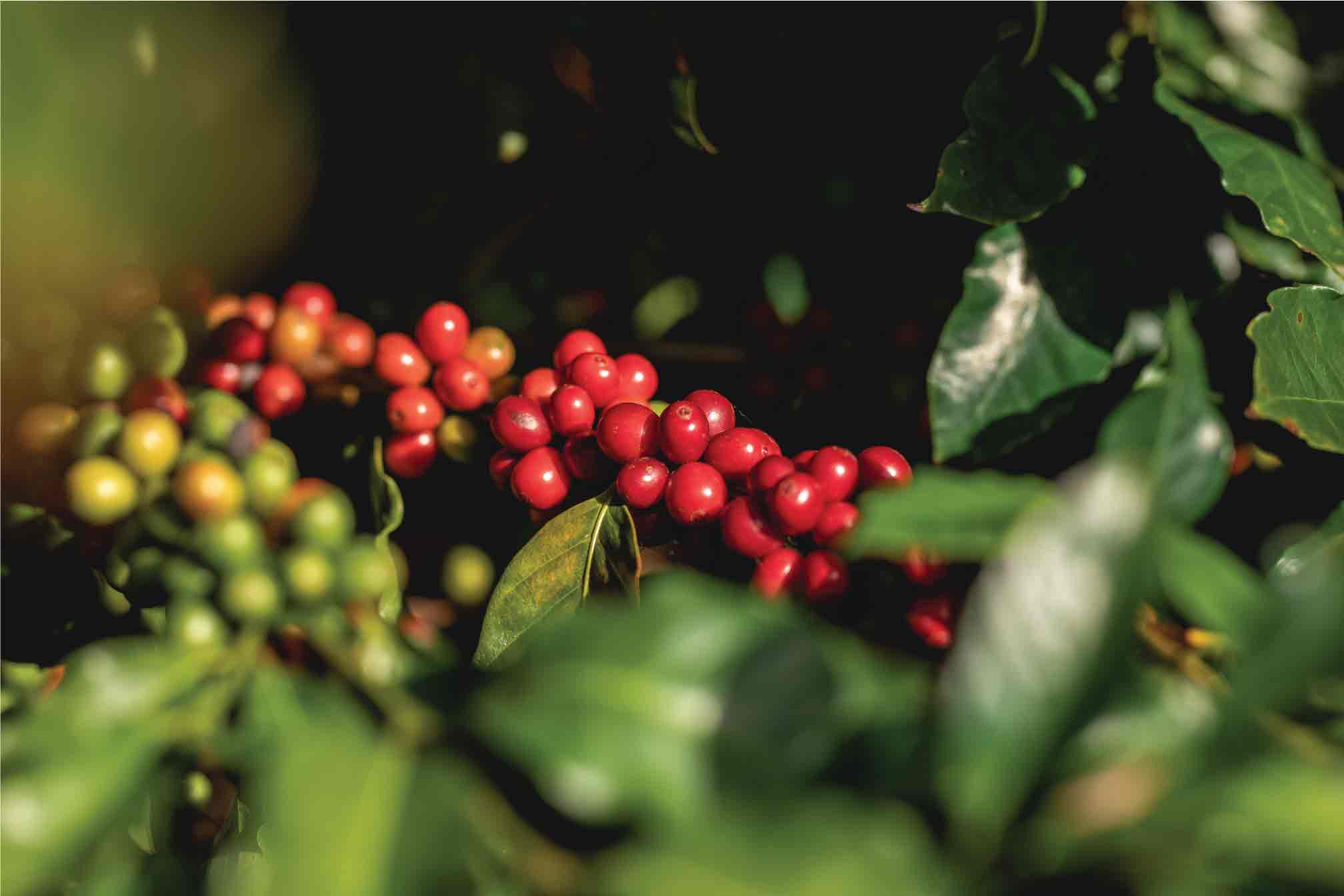

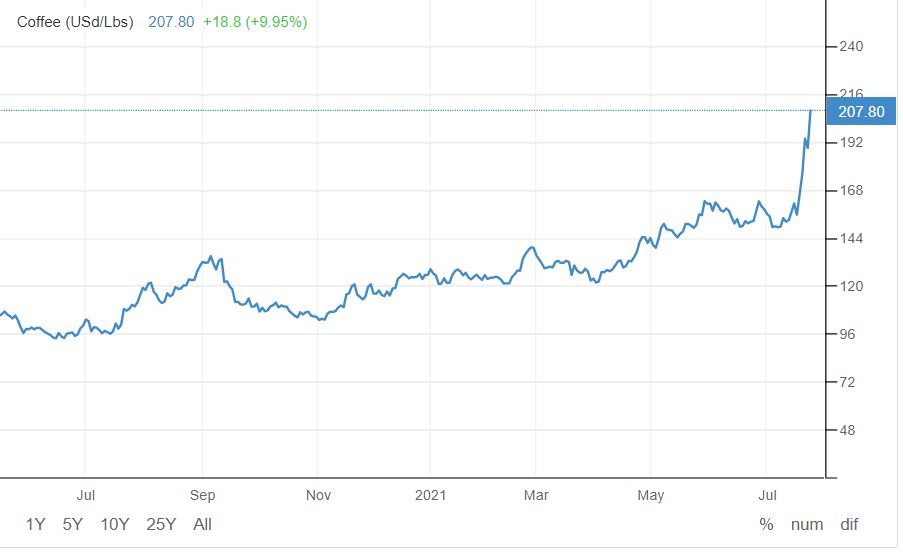

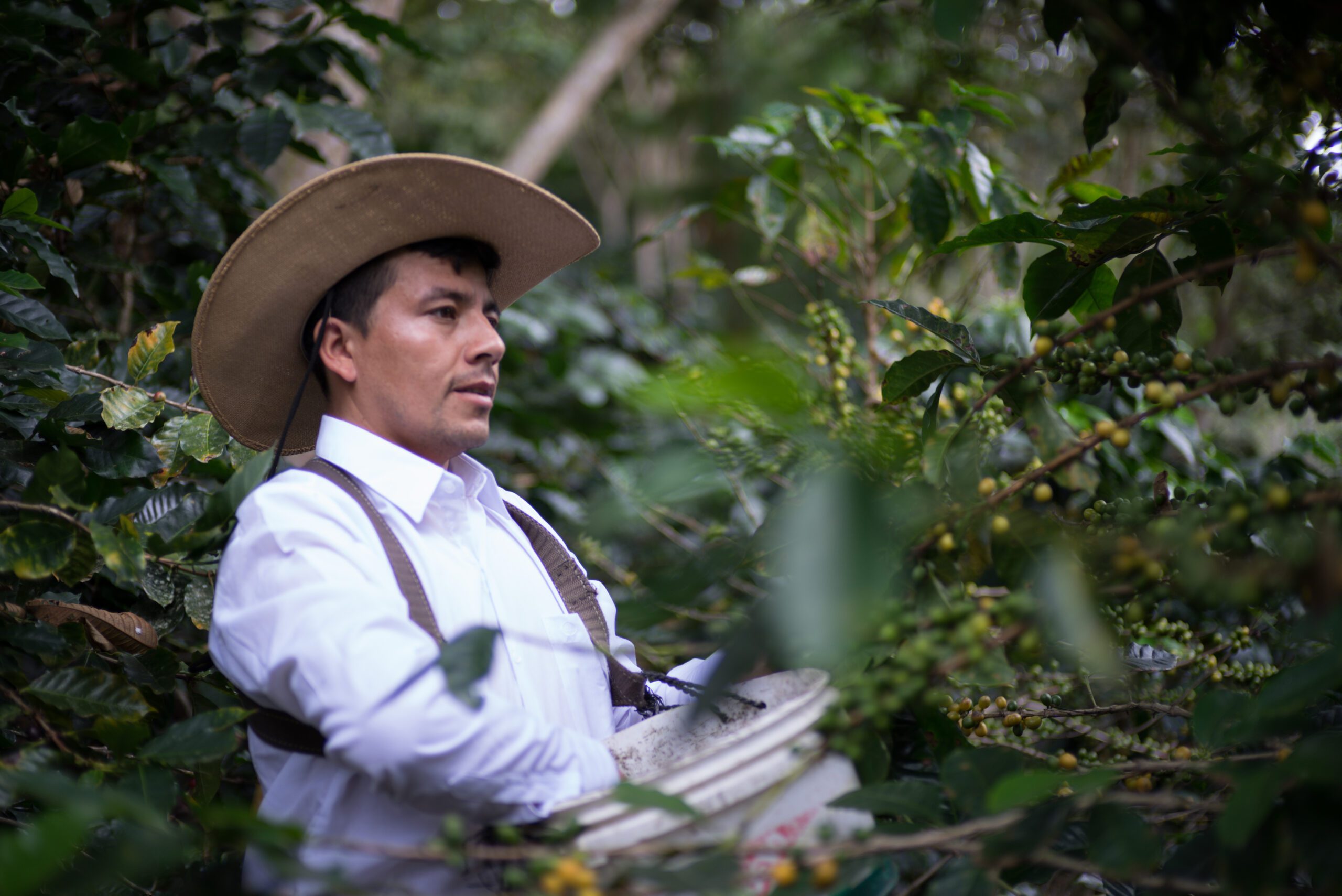
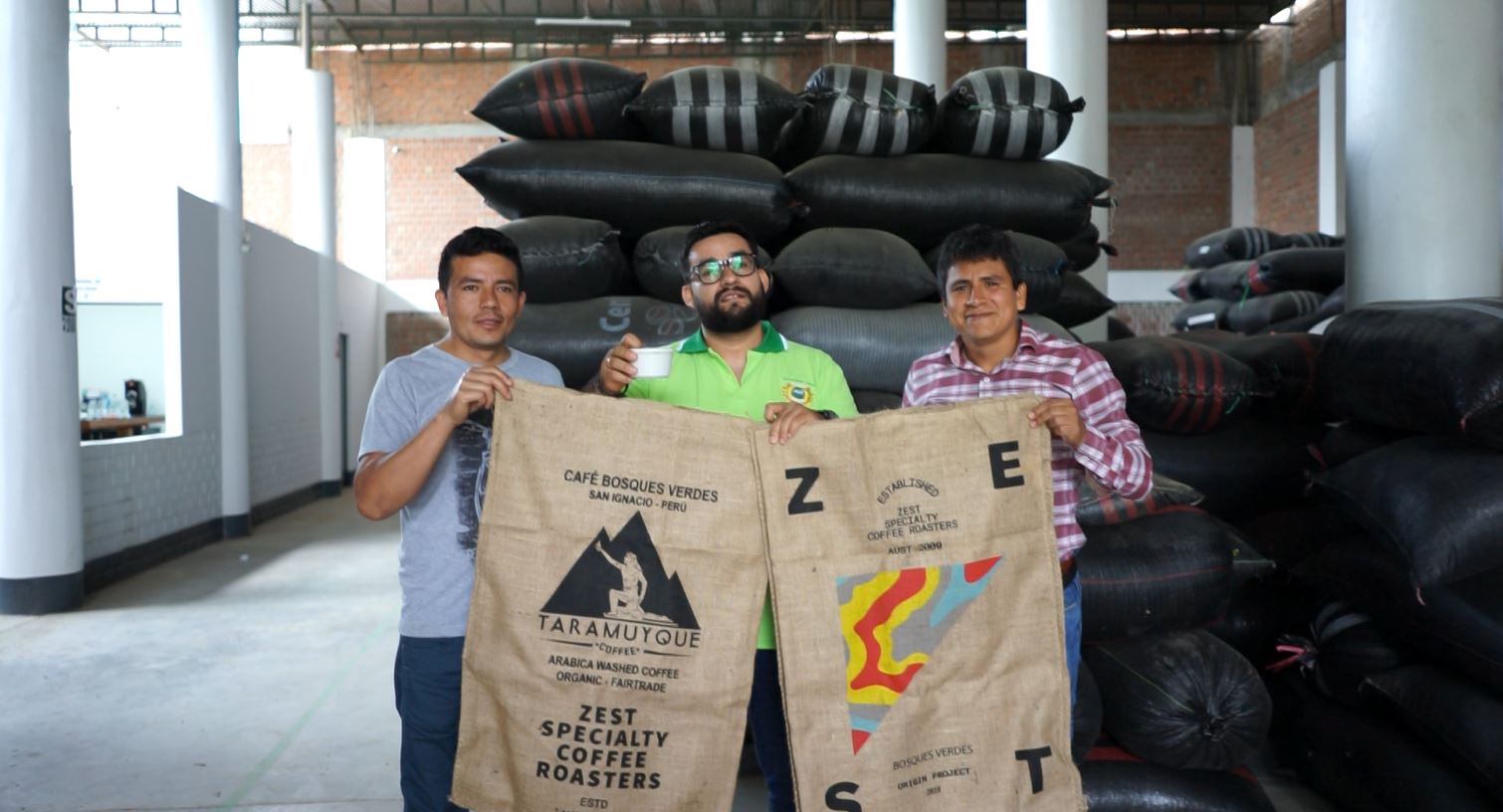
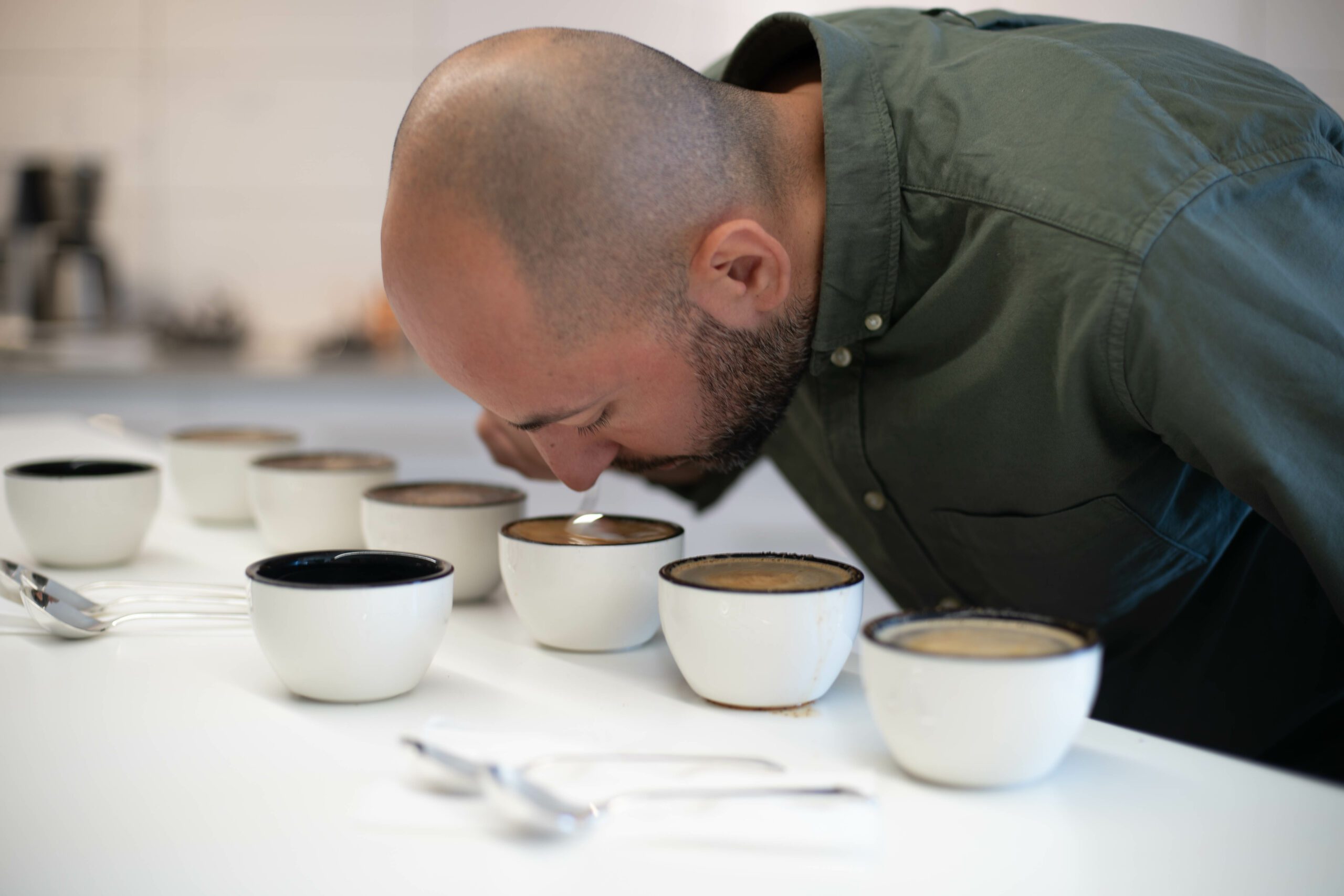



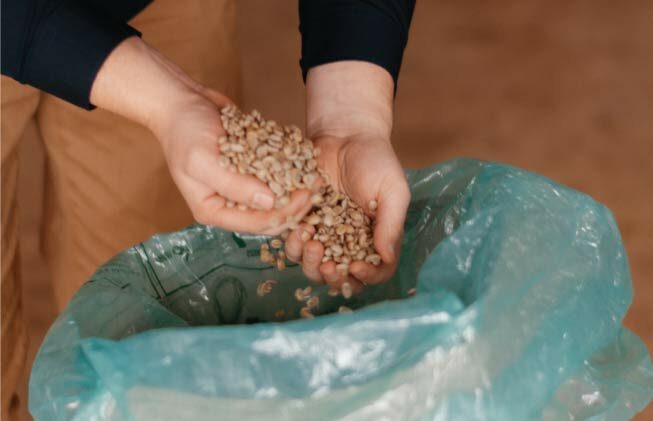





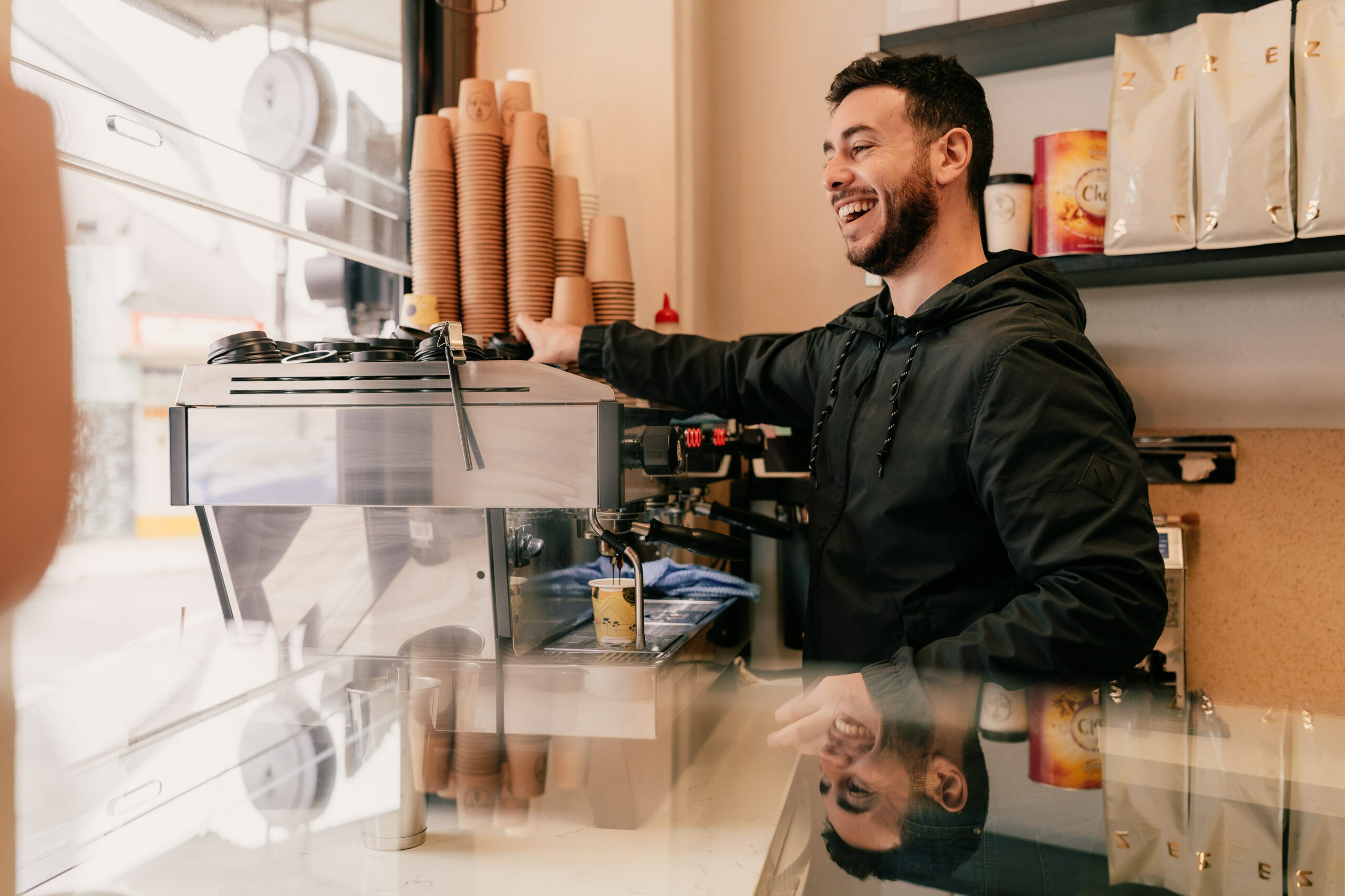
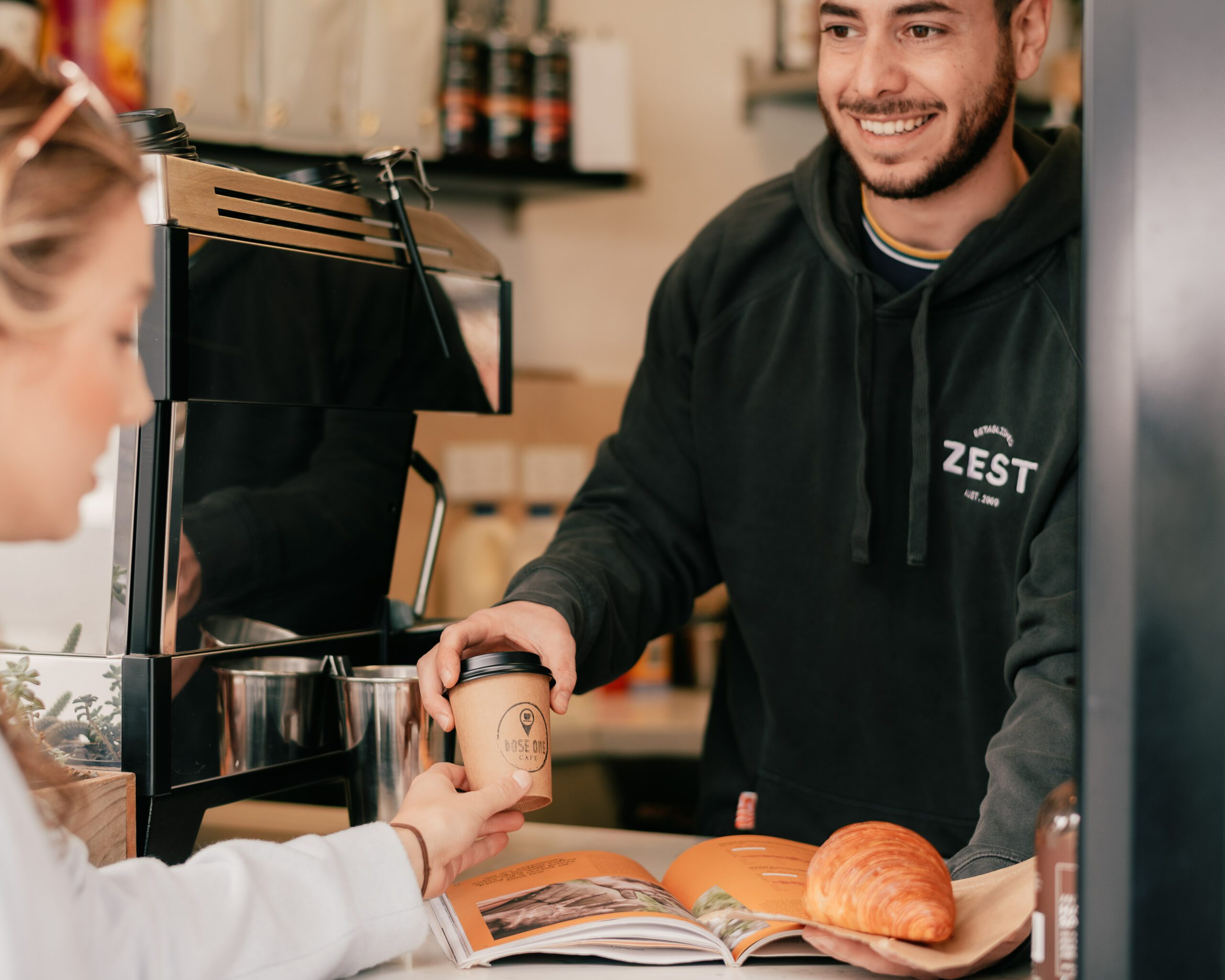
The Coffee Price






IT’S BEEN ONE OF THE LARGEST INCREASES IN C-PRICE HISTORY. LET’S UNPACK THE HOW AND THE WHY OF THE INCREASED PRICE OF COFFEE.
The coffee price on the world coffee market has surged sharply over the last two days reaching a six and a half year high of nearly USD2.00 per pound. This latest spike is on the back of significant rises over the past few months. Take a look at the graph.
So why the jump?
As with any commodity, the NYC price is responsive to market forces of supply and demand and external events affecting the industry. This recent spike has been the result of an unusual cold snap in the world’s largest coffee producing country, Brazil. Severe frosts have delivered a damaging blow to coffee trees in the renowned coffee growing region of Minas Gerais, ruining ready to harvest cherries and harming prospects for next year’s crop. Brazilian farmers have had a tough year! Farm yields had already been under pressure from a sustained drought in the country. This threat to world supply had already driven the world coffee price up significantly. Now it has risen a further 24% in the past three days!
All in all, the coffee price has risen 85% since November 2020 and about 34% of that was just in the past week.
Is this good or bad news? And how should we respond?
In this blog we seek to unpack in simple terms the impacts of this upward trend in our industry.
A snap-shot of a common supply chain
Let us first take a look at the supply chain that delivers our favourite beverage to us wherever we are in the world.
1. FARMER
The farmer cultivates the coffee trees then harvests the fruit and begins the processes such as washing, depulping and drying the coffee. The farmer is paid by the co-operative based on the quantity and quality of the coffee he produces. This is what we call farm gate price.
2. CO-OPERATIVE
The co-operative works with a number of small-holder farmers providing support and training in agronomy and processing. The co-operative then collects the parchment (partly processed coffee beans) from the farmers, conducts quality control and grading analysis and then on-sells the coffee to a trader.
3. TRADER
The trader pays the co-op and matches incoming coffee from the producers with the needs of importers and roasters in other countries, and often arranges further processing of the beans including dehulling, sorting, grading by size and quality and packing for export. He pays for these extra processes and also for freight and warehousing within the country of origin.
4. IMPORTER
The importer buys the coffee at an FOB (Free on board) price from the trader and arranges shipping of the green coffee from origin countries. He then provides a quality assurance and warehousing service for roasters.
5. ROASTER
The roaster receives the green beans after their long journey from the farm and is finally responsible for bringing out the flavour through the roasting process. The roaster then packages and distribute the beans to the cafes.
6. CAFÉ
The café put the roasted beans in the skilled hands of the barista, the final custodian of the product and the person entrusted with extracting the wonderful flavour and serving the coffee-loving consumer.
7. CONSUMER
The end of the journey. The coffee drinker pays for their latte and enjoys the flavoursome fruits of the long process from farm to cup.
This is a generic supply chain based on our Peru coffee. Supply chains vary significantly between countries but what remains the same is that value is added to the coffee beans as the progress through their journey from the tree to the cup. What we see is that there are many stakeholders all of whom are seeking a fair deal to make this chain viable and sustainable.
How does the ‘C’ market or future market affect the prices farmers get for their coffee?
On the futures market in New York Arabica coffee is treated as a commodity. Here traders buy and sell contracts to supply or receive a standard quality of coffee at some date in the future. It is not physical parcels of coffee being bought or sold. As with all stocks and commodities, futures prices are based on forecasts and expectations of supply and demand.
Harvest size, world weather or political events can play a big part in those speculating on the green coffee price. Recent events such as weather in Brazil significantly reducing the harvest yield, political unrest in Colombia where ports have been blocked by protesters, coinciding with large economies such as USA and UK opening again post Covid, have pushed the C-price to levels not seen for years.
How does this impact the prices of real physical coffee shipments of coffee globally? In the physical market prices of green beans vary based largely on the flavour and quality of the beans. Coffee is tasted using an internationally accepted cupping protocol and receives a cupping score. This score helps determine the value of the coffee.
However, the pricing model in most producing countries is based on a differential over the NYC price. For example, an 85 scoring coffee in Colombia may fetch an extra $1 above the NYC price. This linkage between the NYC and the actual price the coffee farmers or co-operatives receive is the reason that at the current time all coffee has risen significantly in price.
So how could this price hike be a good thing?
Putting it simply, a higher C price drives better income for farmers and players in the supply chain at origin. This has always been important to us at Zest.
Over 60% of the world’s coffee is produced by more than 12 million smallholder farmers growing their crops on less than 5 hectare family farms. A large percentage of these coffee farming families and labourers involved in the picking and processing of the crops, are living in poverty. When the C price is low it only exacerbates this problem and in recent years has seen many farmers change crops or abandon their farms.
As an industry, the specialty coffee fraternity has been passionate about decoupling the prices farmers receive from the C price and de-commoditizing the product so that farmers can be rewarded fairly for the quality of the crop they produce. However, while the specialty coffee industry certainly pays a premium for high quality beans, the constant drag of a low C price on the bulk of coffee produced has meant limited profits for smallholder farmers.
So now that the C has increased steadily over the past two years and is currently sitting in the 1.8 to 1.9 USD/Pound range (up from 0.9 to 1.00 two years ago), farmers and producers are quite rightly rejoicing.
Our job as roasters is to ensure that our supply chains are transparent to ensure that this increase in price is indeed being passed right back to the farmer. This is why we deal directly with farm owners and co-operatives and trusted traders such as Bosques Verdes in Peru, 3 Brothers in Brazil and Cofinet in Colombia.
How is this increase going to impact cafes already struggling under the pressures of covid lockdowns?
Café owners and hospitality in general is under intense pressure at the moment and it may feel like the last straw to talk about a price increase in this essential and significant cost item in their weekly expenses. When we put this in perspective, we feel most café owners will embrace a small increase in the price of their specialty coffee in the context of the benefit of the increase to farmer’s income and living standards especially if they can effectively pass this on to the consumer.
If roasted coffee had to increase by $2-3 per kilogram as part of a roasters package to a café, this would still mean a net increase in the cost of producing a delicious latte of 5-10 cents.
So as not to impact profitability in these difficult times, if the café business increased their price of a standard latte by 10-20 cents would the consumer baulk at it? We think, probably not. Especially if we can educate the coffee drinker a little about the benefit to the millions of coffee producers the world over.
At Zest we care about all our stakeholders – farmers, traders, our staff, our café customers and their customers. It is an essential ecosystem sustaining so many people and delivering a beverage none of us would want to go without for a day!
Interestingly at Zest this will be the first time we have increase the price of coffee to our valued café partners since we started the business back in 2009.
Long may the C price stay at sustainable levels for the farmers and for our industry!